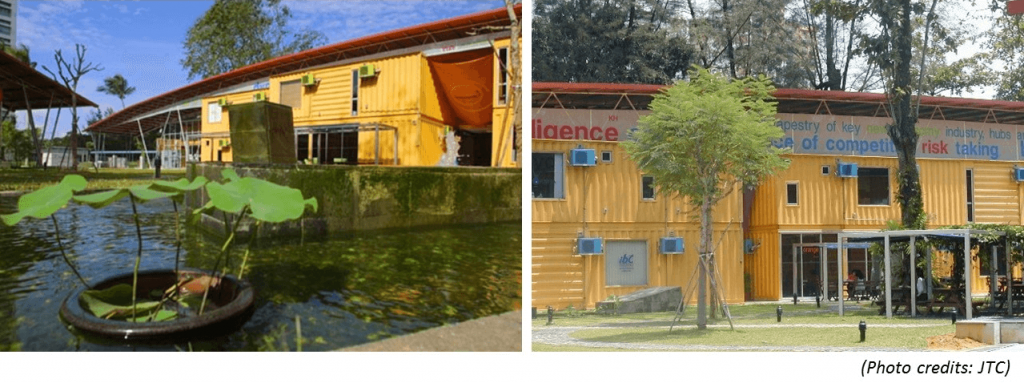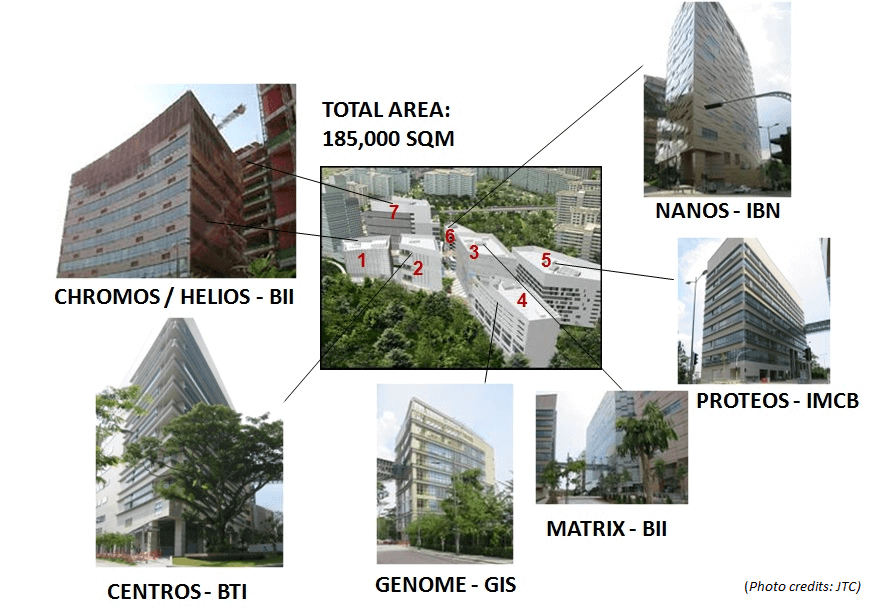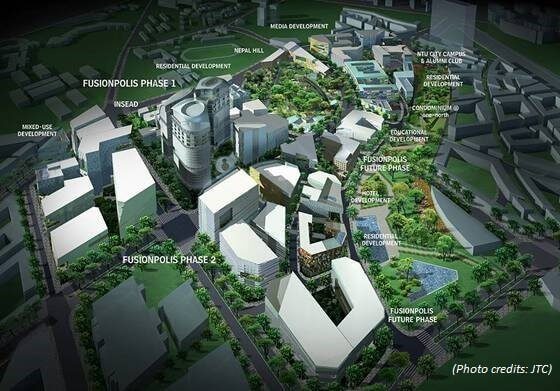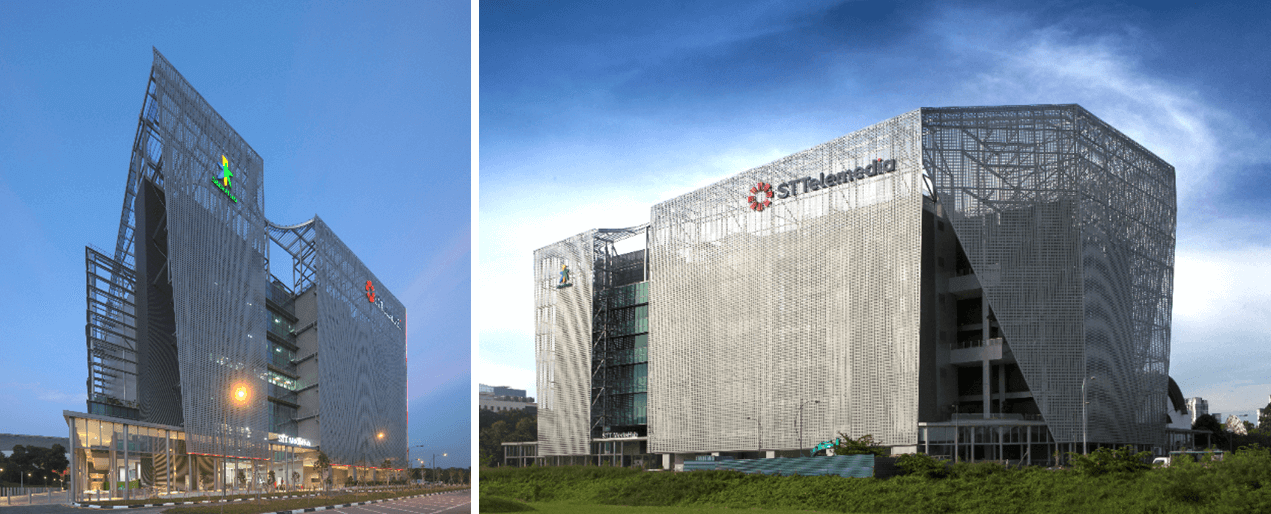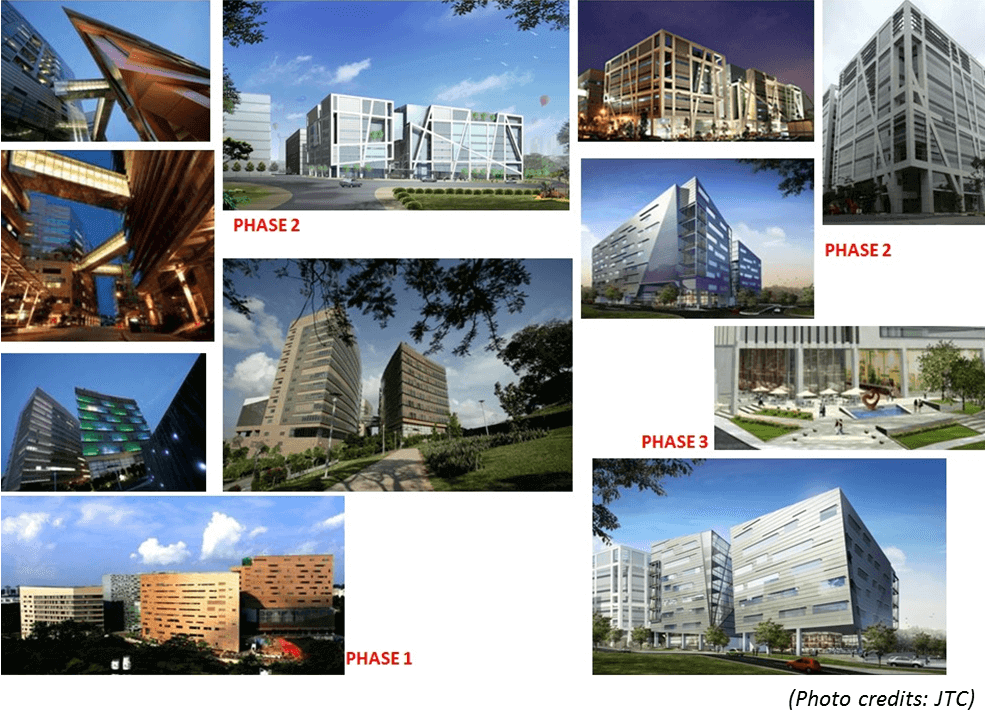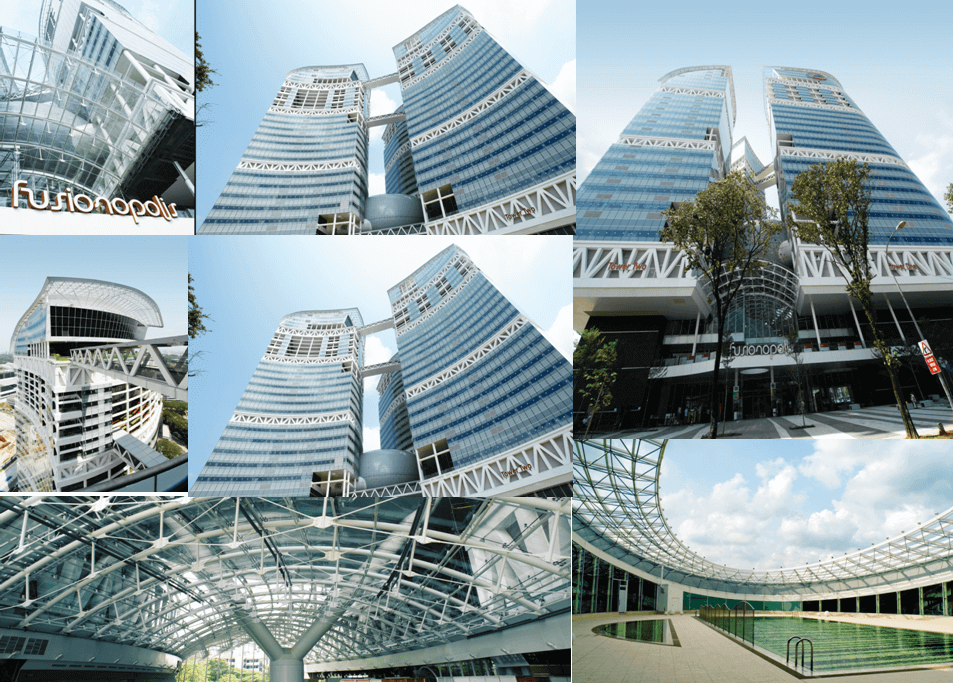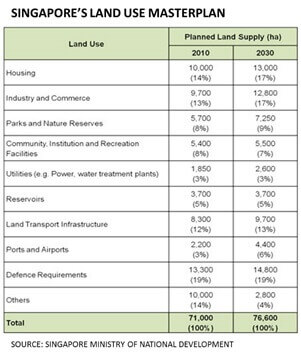Multi-level industrial buildings are commonly found in land-scarce countries. They are developed in response to high industrial land prices and rents, and suit tenants whose operations have higher throughput volumes.
As we see the upward trend of building such multi-tiered complexes in land scarce Singapore, Ms Siah Puay Lin, Deputy Director of Surbana Jurong Infrastructure Pte Ltd, shares insights on the feasibilities and strategies of Singapore’s industrial landscape and its future.
Q1: In a nutshell, how has Singapore’s industrial landscape evolved since the country’s Independence?
A: During the 60’s and 70’s, Singapore attracted labour intensive industries and provided ready-built standard factories to facilitate speedy set-up for the companies – local and foreign. Economic growth and job creation were seen in quantitative terms, based on the number of jobs that could be created and the amount of foreign investment that could be attracted. Two distinct forms of industrial environments emerged during this time:
- large industrial estates in the rural parts of Singapore;
- light industrial estates located close to housing estates or fringing the central area.
The 80’s saw the development of Singapore into a modern industrial economy. It resulted in a shift to capital and technology focused industries with a better-equipped work force and higher capabilities. To support and meet the needs of new businesses, the type of industrial parks that evolved took on a new dimension:
- Upgrading and refurbishing of industrial parks through new product creation;
- Purpose-built science parks and business parks. These parks are set in high quality environments catering to the needs of modern businesses.
The birth of Information Technology in the 90’s saw many businesses competing to increase their worth in the value chain. Advancement in technology also meant industrial developers had to find ways of addressing new business needs.
The 90’s also introduced “stack-up factory” – a new building typology that Jurong Town Corporation (JTC) came up with, designed to intensify land use by stacking standard factories on top of one another to create multi-storeyed factories. The use of ramps to gain access to upper levels allowed occupants to enjoy the same convenience as those at ground level – for loading/unloading goods.
By the millennium, the path towards a full-fledged knowledge-based economy was clearer. In tandem, the master planning of industrial land adapted new concepts such as ‘industry clustering’ and ‘integrating Live-Play-Learn environments’. A good example is the 200-ha One-North estate which features mixed-use industrial spaces. Its Vista Exchange area was designed and developed into a lifestyle, business, hotel, entertainment and transport hub.
Q2: How has the role of an architect / industrial urban planner changed over the different periods?
A: The architect/planner has had to adopt a multi-dimensional approach to solving problems. He/she has had to have a deeper understanding of industry needs as well as the effects of technological advances. He/she then has had to translate these into the built environment – not merely by checking for compliances – but by going beyond to provide more flexibility, cost effectiveness and to create healthy work environments.
Q3: The 2010’s is seeing Land Intensification Strategies being rolled out. Please share how industrial developers are creating more spaces within a same plot of land.
A: An example of how intensely single plots of land are used is the Jurong Rock Caverns, Southeast Asia’s first underground liquid hydrocarbon storage facility that goes as deep as a 9-storey building. It helped to solve problems of oil storage and made available land for further industrial expansion.
Besides building downwards as in the case of Jurong Rock Caverns, the drive towards more urbane and smart solutions with regards to building typologies was accelerated to allow companies to build higher and utilise available space optimally.
The other example is the consolidation of similar industrial facilities and common amenities – to eradicate duplication and optimises valuable space for production needs. We implemented this in our projects in One North (Biopolis), CleanTech and Medtech Hub by providing centralised utilities and common facilities unique to the target industries.
The 8-Storey Sin Ming Auto City is a continuum of the revolutionary concept and design where motor workshops are fully-integrated and operate under a multi-tiered industrial complex – providing one-stop vehicular solutioning, meeting motor repair needs and maintenance services in an up-to-date, clean and modern environment. It comprises 14 heavy vehicle units, 117 motor workshop units and 30 spray painting units.
Q4: Using the 8-Storey Sin Ming Auto City as an example of smart building solutioning in land-scarce Singapore, please discuss the integrated approaches to spatial planning for such industrial complexes.
A: The 8-storey Sin Ming Auto City boasts of passive design strategies that enhance the work and living environment through the staggering of the building mass, and the introduction of air-wells – bringing in good daylighting and ventilation. The concept of “work-live-play-learn” resonates as part of the build plan in 2012.
All units are fitted with an ancillary mezzanine office and dedicated workers’ living quarters – providing on-site living accommodation to workers. Ensuring that the respiratory health and living standards of workers in the complex are not compromised, ventilation and exhaust shafts for expulsion of engine emissions were carefully integrated (please refer to illustration 1 for the building’s approach to total sustainability). The building also holds essential amenities such as a staff canteen, a recreational centre, and convenience store.

The introduction of balconies, self-sustaining vertical greening and rainwater harvesting further enhance green building initiatives, making it an all-inclusive eco-system. (The Sin Ming Auto City was awarded Gold for Building and Construction Authority’s Green Mark in 2015). Please refer to illustration 2 for the building’s green initiative.

Q5: Multi-tiered industrial buildings seem to be the way to go for Singapore’s industrial landscape. How different is it to design and plan for residential estates versus industrial estates?
A: Planning objectives are similar in that we are essentially building for people and creating communities. The former would require provisions that meet the needs of families and individuals, and how they will interact and contribute positively towards the good of the larger community. The necessity for schools, town centres, parks, recreational and neighbourhood amenities must be considered; and this is underscored by good traffic network, transportation, utilities network and internet connectivity.
In the same way, the industrial estate needs to be planned for the work and business community – with good traffic network, transportation, and the appropriate utilities provisions. It has to be sensitive to the type of business, products and workforce it serves in and around the estate precinct. Clustering of similar industries is important as it allows for systematic planning, and adequate provisions for shared facilities and amenities – all to be made from the onset.
Q6: Are there existing global industrial projects which are modelled after Singapore’s?
A: Building upon our legacy from Jurong Town Corporation (JTC), Surbana Jurong has been successful in many overseas industrial park projects – Suzhou Industrial Park, Tianjin Eco City Business Park (please refer to illustration 3), Qatari FTZ and Logistics Park (Qatar), iCAD (Abu Dhabi, UAE), to name a few, are shiny examples of how other cities are replicating Singapore’s industrial park models.

Q7: So, what holds for the Future of Singapore’s Industrial Landscape?
A: Industrial building designers have probably taken on new forms of industrial clustering/planning during modern times, and this may not necessarily be confined to the traditional spatial concentration of similar industry companies in a particular location.
Similarly, such innovation continues for new industrial estates delving into newly found industries. By gaining insight on the nature of the industry’s value chain and operational standards of companies, industrial infrastructures are shaped to provide the tangible framework – and each company operating in it is then able to generate synergies amongst themselves to form an industrial community with a competitive edge.
Tracing how Singapore’s industrial landscape has evolved over the years, we observe how each decade’s economic and land policy mechanisms function. This, combined with physical planning and urban design initiatives, will in turn influence the focus in planning and design principles of industrial estate typologies. As such, the result of the physical form, as well as the interaction and functioning of Singapore’s industrial estates, has seen a progressive transition from the past till present, with each decade adding on a new dimension to the industrial built environment in Singapore.
Singapore’s industrial landscape development will continue to be driven by land intensification, new technologies and the emergence of new industries. Even farming and food business businesses are going high-rise. Buildings will be designed for ease of maintenance; hence the use of BIM for facility management will gain in popularity. Overall and increasingly, new industrial estates and buildings will and must become more eco-friendly as well as society-friendly. Not only must we not pollute and make the best use of resources, we must cater to an aging population and special-needs groups.
This article is co-created by Surbana Jurong Academy.
Perspectives, developed by SJ Academy, is our platform to explore new ways of tackling some of today’s most complex challenges in the urban and infrastucture sector. We draw on ideas and opinions from our experts across different businesses. Click here to read more about Technology & Innovation, Connectivity & Infrastructure, and Design Leadership.



